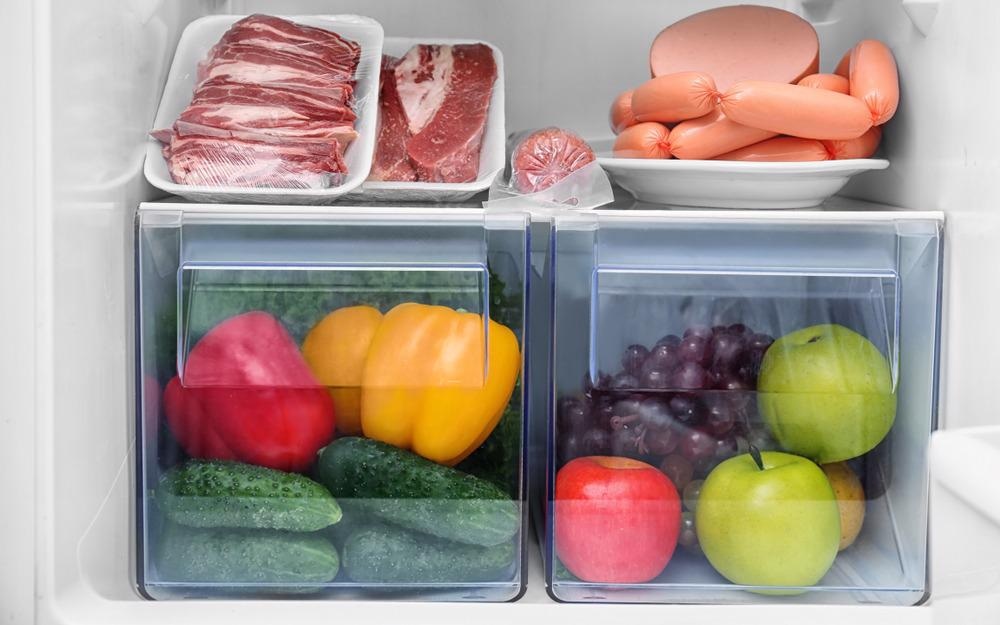‘Smart fridges’ have been touted as one technology to help reduce household food waste. With nearly half of all food waste coming from residential homes,1 consumer food waste is a highly appealing target to reduce the total amount of food that goes to waste.

Image Credit: Africa Studio/Shutterstock.com
The challenge for a smart fridge is how to identify deteriorating food quality in an automated way. Most current smart fridge technologies make use of RFID or barcode details to keep an inventory of goods. These can then be compared to databases of typical shelf lives for such items and used to alert the user when a particular item may be approaching its expiration date. Some smart fridges contain internal cameras, so users can visually inspect fridge contents before making purchase decisions to avoid unnecessary buys.
However, relying on best before and expiry dates for food comes with its own series of problems, and may even worsen the issue of food waste. There is an issue of education around the true meaning of the dates on food labels and many misinterpret these, unnecessarily throwing away food without checking whether the food was no longer edible.2
When we are inspecting food, we tend to perform a mixture of sensory inspections. This includes a visual check for the presence of molds or discoloration and checking the smell of the product for any unpleasant odors. While smells originate from the presence of chemical compounds, miniaturizing the equipment to detect these reliably would be challenging and would only work for foods that release known compounds during the degradation process.
Minimizing Food Waste
Several strategies are being explored to reduce food waste. The use of modified atmospheric packaging is already common to increase product shelf life as certain gas combinations can improve longevity in different foodstuffs.3 Other approaches include using color-changing labels as a way of indicating a product is past its real expiry date.4 This is a fast way of chemical detection that provides a reliable, visual warning of the status of a food product. Part of the challenge that needs to be overcome to make these more widespread is using chemical reagents that are food safe and making labels that are either edible or do not degrade the food quality.
Methods that provide online information on a food product’s status are the most effective at preventing unnecessary waste. Recent work from the Journal of Spectral Imaging, suggests that spectral imaging may be a reliable way of detecting food status and be suitable for analyzing products contained in films. This would reduce the number of volatile chemical compounds they would emit.5
Spectral Imaging and Food Waste
Spectral imaging involves the detection of a variety of wavelength bands across a given region of the electromagnetic spectrum, recording a complete absorption or reflectance spectrum with a continuous energy axis for the measurement. For recording spectra in the visible region of the electromagnetic spectrum, often only RGB detection is used.
However, for the imaging setup designed to examine the freshness of wrapped poultry samples, the team found that using full spectral imaging gave an excellent 93.8% accuracy for the identification of chicken that had been stored for longer times and was past its ‘use-by' date.
Using RGB imaging only achieved an accuracy of 87.5% but the sensitivity and overall accuracy were much lower than for spectral imaging methods. This is because during the aging process several bands in the full reflectance spectrum showed a clear broadening and spectral change. While single wavelength detection did show some trends in intensity, it was ultimately from the changes in band shape that the more accurate status of the meat could be determined.
The team used automated processing to examine the sample results by employing K-nearest neighbor neural network models to help identify whether the meat was past its use-by date. The reason spectral imaging could be used to identify these changes in the meat's age was due to hemoglobin and lipid oxidation in the meat that both result in color changes. Older meats generally look browner due to the formation of metmyoglobin from the previously bright red oxymyoglobin species that dominate in fresher samples.
With an automated analysis proceed and relatively compact size, this type of portable imaging device could be integrated into a smart fridge for live information gathering on food status.
As most plastic wraps are transparent to visible wavelengths, having items still in packaging is not a problem, making the technology also a more practical way of reducing food waste.
References and Further Reading
- Gunders, D. “Wasted: How America is Losing Up to 40 Percent of Its Food from Farm to Fork to Landfill.” Natural Resources Defense Council, 2017.
- Secondi, L. (2019). Expiry Dates, Consumer Behavior, and Food Waste: How Would Italian Consumers React If There Were No Longer “Best Before” Labels? Sustainability, 11, 6821.
- Kader, A. A., Zagory, D., & Kerbel, E. L. (1989). Modified Atmospheric Packaging of Fruits and Vegetables. Critical Reviews in Food Science and Nutrition, 28(1), 1–28.
- Dudnyk, I., Janecek, E., Vaucher-joset, J., & Stellacci, F. (2018). Sensors and Actuators B : Chemical Edible sensors for meat and seafood freshness. Sensors and Actuators, B: Chemical, 259, 1108–1112. https://doi.org/10.1016/j.snb.2017.12.057
- Swanson, A., Herrero-langreo, A., Gowen, A., & Herrero-langreo, A. (2021). Comparison of portable spectral imaging ( 443 – 726 nm ) and RGB imaging for predicting poultry product “ use-by ” status through packaging film. Journal of Spectral Imaging, 10, a6. https://doi.org/10.1255/jsi.2021.a6
Disclaimer: The views expressed here are those of the author expressed in their private capacity and do not necessarily represent the views of AZoM.com Limited T/A AZoNetwork the owner and operator of this website. This disclaimer forms part of the Terms and conditions of use of this website.